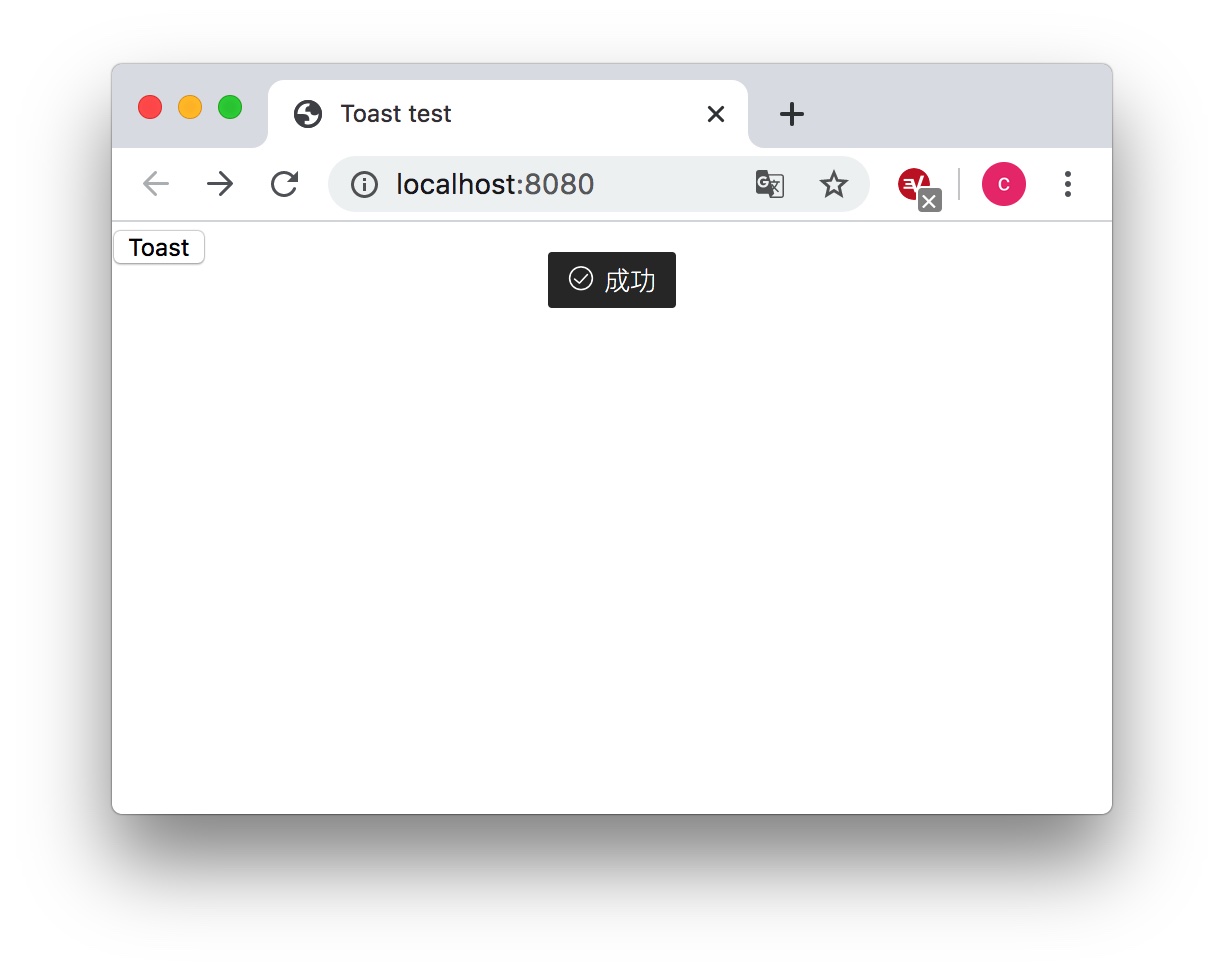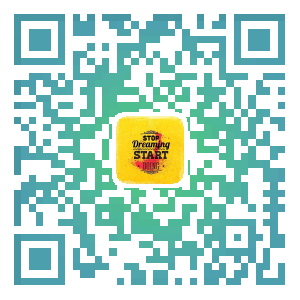
Vue 项目开发过程中,经常用到插件,比如原生插件
vue-router、vuex,还有element-ui提供的notify、message等等。这些插件让我们的开发变得更简单更高效。那么 Vue 插件是怎么开发的呢?如何自己开发一个 Vue 插件然后打包发布到npm?
本文涉及技术点:
- Vue 插件的本质
Vue.extend()全局方法- 如何手动挂载
Vue实例 Vue.use()的原理- 如何打包成
umd格式 - 发布前如何测试
npm包
一、定义
什么是Vue插件,它和Vue组件有什么区别?来看一下官网的解释:
“插件通常用来为 Vue 添加全局功能。”
“组件是可复用的 Vue 实例,且带有一个名字。”
—— Vue.js 官网
Emmmm,似乎好像有种朦胧美。。。
我来尝试解释一下,其实, Vue 插件 和 Vue组件 只是在 Vue.js 中包装的两个概念而已,不管是插件还是组件,最终目的都是为了实现逻辑复用。它们的本质都是对代码逻辑的封装,只是封装方式不同而已。在必要时,组件也可以封装成插件,插件也可以改写成组件,就看实际哪种封装更方便使用了。
除此之外,插件是全局的,组件可以全局注册也可以局部注册。
我们今天只聚焦 Vue 插件。
插件一般有下面几种:
- 添加全局方法或者属性。如: vue-custom-element
- 添加全局资源:指令/过滤器/过渡等。如 vue-touch
- 通过全局混入来添加一些组件选项。如 vue-router
- 添加 Vue 实例方法,通过把它们添加到 Vue.prototype 上实现。
- 一个库,提供自己的 API,同时提供上面提到的一个或多个功能。如 vue-router
—— Vue.js 官网
二、插件的使用
插件需要通过 Vue.use() 方法注册到全局,并且需要在调用 new Vue() 启动应用之前完成。之后在其他 Vue 实例里面就可以通过 this.$xxx 来调用插件中提供的 API 了。
下面以实现一个简易的提示框插件 toast 为例,给大家介绍怎么一步一步开发和发布一个 Vue 插件。
希望达到的效果:
在 main.js 中 use:1
2
3
4
5// src/main.js
import Vue from 'vue'
import toast from '@champyin/toast'
Vue.use(toast)
在 App.vue 的生命周期 mounted 方法里调用 this.$toast():1
2
3
4
5
6
7
8
9
10
11
12
13
14
15
16
17
18
19
20// src/App.vue
<template>
<div>
<button @click='handleClick'>Toast</button>
</div>
</template>
<script>
export default {
name: 'demo',
methods: {
handleClick() {
this.$toast({
type: 'success',
msg: '成功',
duration: 3
})
}
}
}
</script>
运行后在页面上点击按钮,弹出 成功 的提示,然后3秒后消失。

在线地址:http://champyin.com/toast/
三、插件开发
1. 编写 toast 的本体。
在 Vue 项目(你可以使用 Vue-cli 快速生成一个 Vue 项目,也可以自己用 webpack 搭建一个)的 src 目录下创建 components/Toast/index.vue 文件。1
2
3
4
5
6
7
8
9
10
11
12
13
14
15
16
17
18
19
20
21
22
23
24
25
26
27
28
29
30
31
32
33
34
35
36
37// src/components/Toast/index.vue
<template>
<transition name='fade'>
<div class='uco-toast' v-if='isShow'>
<span :class='iconStyle'></span>
<span>{{msg}}</span>
</div>
</transition>
</template>
<script>
export default {
data() {
return {
isShow: false,
type: 'success',
msg: '成功',
duration: 1,
};
},
computed: {
iconStyle() {
return `tfont icon-${this.type} toast-icon`;
},
},
mounted() {
this.isShow = true;
setTimeout(() => {
this.isShow = false;
}, this.duration * 1000);
},
};
</script>
<style lang='less' scoped>
// 样式略
</style>
现在 toast 本体完成了,但是它里面的数据目前没法改变,因为我没有给它定义 props 属性。这不是 bug,而是,插件并不是通过 pops 来传值的。
2. 手动挂载 toast 实例的 dom
为了给插件传值,可以利用基础 Vue 构造器 Vue.extend() 创建一个“子类”。这个子类相当于一个继承了 Vue 的 Toast 构造器。然后在 new 这个构造函数的时候,给 Toast 的 data 属性传值,然后手动调用这个实例的 $mount() 方法手动挂载,最后使用原生JS的 appendChild 将真实 DOM (通过实例上的 $el 属性获取)添加到 body 上。
在 src 目录下新建 components/Toast/index.js 文件:1
2
3
4
5
6
7
8
9
10
11
12
13
14
15
16
17
18
19
20
21
22// src/components/Toast/index.js
import Vue from 'vue';
import Toast from './index.vue';
// 使用 Vue.extend() 创建 Toast 的构造器
const ToastConstructor = Vue.extend(Toast);
const toast = function(options = {}) {
// 创建 Toast 实例,通过构造函数传参,
// 并调用 Vue 实例上的 $mount() 手动挂载
const toastInstance = new ToastConstructor({
data: options
}).$mount();
// 手动把真实 dom 挂到 html 的 body 上
document.body.appendChild(toastInstance.$el);
return toastInstance;
};
// 导出包装好的 toast 方法
export default toast;
3. 暴露 install 方法给 Vue.use() 使用。
为了支持 Vue.use(),Vue.js 的插件应该暴露一个 install 方法。这个方法的第一个参数是 Vue 构造器,第二个参数是一个可选的选项对象。
—— Vue.js 官网
通过 Vue.js 源码也可以看出,Vue.use() 方法所做的事情就是调用插件或者组件的 install 方法,然后把全局 Vue 传进去供插件和组件使用。1
2
3
4
5
6
7
8
9
10
11
12
13
14
15
16
17
18
19
20
21
22
23
24// https://github.com/vuejs/vue/blob/dev/src/core/global-api/use.js
/* @flow */
import { toArray } from '../util/index'
export function initUse (Vue: GlobalAPI) {
Vue.use = function (plugin: Function | Object) {
const installedPlugins = (this._installedPlugins || (this._installedPlugins = []))
if (installedPlugins.indexOf(plugin) > -1) {
return this
}
// additional parameters
const args = toArray(arguments, 1)
args.unshift(this)
if (typeof plugin.install === 'function') {
plugin.install.apply(plugin, args)
} else if (typeof plugin === 'function') {
plugin.apply(null, args)
}
installedPlugins.push(plugin)
return this
}
}
在 src 目录下新建 components/index.js 文件,定义一个 install 方法,在里面将 toast 实例放到 Vue.prototype 上作为 Vue 实例的方法暴露到全局。1
2
3
4
5
6
7
8
9
10
11
12
13
14
15
16
17// src/components/index.js
import toast from './Toast/index';
import '../icon/iconfont.css';
// 准备好 install 方法 给 Vue.use() 使用
export function install(Vue) {
if (install.installed) return;
install.installed = true;
// 将包装好的 toast 挂到Vue的原型上,作为 Vue 实例上的方法
Vue.prototype.$toast = toast;
}
// 默认导出 install
export default {
install,
};
现在插件就开发完成了,可以在当前项目中本地引用这个插件了。1
2
3
4
5
6
7
8//在 main.js 中
import toast from src/components/index.js;
Vue.use(toast);
//在 App.vue 中
handleClick(){
this.$toast();
}
四、发布到npm
为了方便其他人也可以使用到这个插件,我们可以把它发布到 npm 上去。发布的步骤很简单,但是发布之前,需要有一些小配置和一些注意的地方。
1. 打包配置
首先我们要把它打包成可以给浏览器解析的 UMD 格式的的模块,并且去掉对 Vue.js 的打包,这样别人在 Vue 项目中使用这个插件的时候就不会有两份 Vue 或者出现 Vue 版本冲突的问题,以保证可以更好被独立引用。
如果你是用 Vue-cli 生成的项目,那只需要在你的 npm 脚本中配置一下库的打包命令:1
2// package.json
"build:lib": "vue-cli-service build --target lib --name toast --dest lib src/components/index.js"
命令说明:1
2
3
4
5
6
7
8
9
10
11
12
13
14
15
16--target:构建的目标
targetType 有三个选项:lib | wc | wc-async
lib:库
wc:web component
wc-async:异步的 web component
--name:库或组件的名字
当入口为单一文件时,name为库或组件的文件名
当入口为global表达式时,name为每个库或组件文件名字的前缀
[entry]:打包入口
可以是.vue文件,也可以是.js文件
当注册多个web component时,入口可以是一个global表达式,如 components/*.vue
--dest:输出目录
默认为dist目录,也可以修改为自定义的目录
然后运行 npm run build:lib,即可在 lib 目录下生成如下文件:1
2
3toast.umd.js 一个直接给浏览器或者AMD loader 使用的 UMD 包
toast.umd.min.js 一个压缩版 UMD 构建版本
toast.common.js 一个给打包器用的CommonJS包
如果你是用 webpack 搭建的 Vue 项目,那就需要在 webpck 中配置一下 output.libraryTarget 等属性:1
2
3
4
5
6
7
8
9
10
11
12
13
14
15
16
17
18
19
20
21
22
23
24
25
26
27
28// build/webpack.lib.conf.js
const path = require('path');
const { CleanWebpackPlugin } = require('clean-webpack-plugin');
module.exports = {
mode: 'production',
entry: './src/components/index.js',
output: {
path: path.resolve(__dirname, '../lib'),
filename: 'toast.js',
library: 'toast',
libraryTarget: 'umd',
libraryExport: 'default',
umdNamedDefine: true,
globalObject: 'typeof self !== \'undefined\' ? self : this',
},
externals: {
vue: {
root: 'Vue',
commonjs: 'vue',
commonjs2: 'vue',
amd: 'vue',
},
},
plugins: [
new CleanWebpackPlugin(),
],
};
然后运行 npm run build:lib,即可在 lib 目录下生成如下文件:1
toast.js 直接给浏览器或者AMD loader 使用的 UMD 包
2. 发布前的测试
发布前,我们需要配置一下 package.json 里的 name 和 main 字段:name 的值是最终包的名字,install 和 import 的就是这个名字(请确保全网唯一)。main 的值是包的入口文件路径(相对当前文件的路径),一定要填写正确,否则包无法被引用。1
2"name": "@champyin/toast",
"main": "lib/toast.js",
为了确保包的配置没有问题,我们可以利用 npm link 命令在本地测试一下包的使用情况。使用npm link测试包的使用估计很多人都会,就不赘述了。如果有需要可以看我的另一篇中文章npm link详解。
这个时候,我们其实就可以发布了,但是为了防止把不必要的文件发布出去(比如测试用例和demo)浪费人家下载的流量,我们最好是建一个 .npmigore 文件,语法跟 .gitignore 相同。
3. 发布
发布的方法很简单(不过首先你要有个 npm 账号),在 package.json 所在的目录下执行这两句就可以了:1
2npm add user
npm publish
关于更详细的发布教程,我在另一篇文章有专门细说:如何发布一个npm模块。
4. 安装测试
其实到了这一步一99.99%是不会出错了,安装一遍只是为了那 0.01% 的万一。
在另一个 Vue 项目里(注意不能在开发toast的项目里哈),从 npm 安装自己刚才发布的包:1
npm i -D @champyin/toast
然后在项目中使用一下自己的插件,点击按钮就会弹出 toast 小提示了。1
2
3
4
5
6
7
8//在 main.js 中
import toast from '@champyin/toast';
Vue.use(toast);
//在 App.vue 中
handleClick(){
this.$toast();
}
项目体验地址:http://champyin.com/toast/
npm 地址:https://www.npmjs.com/package/@champyin/toast
欢迎给我提 issue:https://github.com/yc111/toast/issues
Happy coding :)
文章同时发表于公众号「前端手札」,喜欢的话可以关注一下哦。

更多参考:
https://cn.vuejs.org/v2/guide/plugins.html
https://cn.vuejs.org/v2/api/#Vue-extend-options
https://cli.vuejs.org/zh/guide/build-targets.html
https://webpack.js.org/guides/author-libraries/
https://docs.npmjs.com/cli-commands/link.html
https://docs.npmjs.com/cli-commands/pack.html
https://www.npmjs.com/package/@champyin/toast